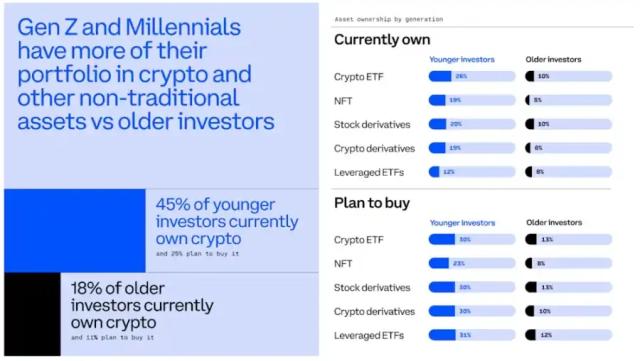Written by: Dingdang, Odaily
MakerDAO, as one of the early pioneers in decentralized finance (DeFi), has recently quietly initiated a profound token economic model reform. From rebranding to Sky Protocol to gradually replacing the governance token MKR with SKY. Unfortunately, this carefully choreographed transformation did not even create a ripple in the market.
As early as 2022, founder Rune Christensen proposed the "Endgame Plan", aimed at addressing increasingly complex governance challenges and fierce market competition by integrating real-world assets (RWA), optimizing economic mechanisms, and rebranding. However, the implementation of this plan was not smooth. Some investors doubted the strategic direction and gradually reduced their MKR holdings; internal community disagreements also led to divergent views, making this transformation low-key and even overlooked by the market.
This transformation is not only an innovation of MakerDAO's existing model but also a repositioning of its future.
The launch of Sky Protocol marks Maker's transition from a single stablecoin protocol to a diversified DeFi ecosystem, with deep collaboration with traditional finance further highlighting this strategic ambition. Rune's vision is to build Maker as a bridge connecting on-chain and off-chain, enhancing protocol stability and market attractiveness through RWA introduction and token economic optimization.
However, the market seems to have not yet fully realized the profound significance of this change: investor sell-offs and community disputes have obscured the new landscape Sky is constructing. This article will delve into the adjustment process and significance of the MKR economic model and explore the deep signals released by its collaboration with Wall Street capital.
MakerDAO's Brand Repositioning and Token Conversion
MakerDAO's brand upgrade to Sky Protocol is accompanied by a gradual transition of governance tokens from MKR to SKY.
Through the sky.money platform, users can voluntarily convert at a fixed ratio of 1 MKR to 24,000 SKY. As of March 25, 2025, MKR's total supply has been reduced to approximately 874,000 (due to historical burns), with 11.8% already converted to SKY. This percentage is lower than expected, reflecting some holders' wait-and-see attitude.
Meanwhile, the stablecoin Dai offers a 1:1 upgrade path to USDS, with users earning SKY staking rewards by staking USDS. According to the latest data, Sky ecosystem's Total Value Locked (TVL) is around $480 million, with USDS circulation estimated at $1.5 billion, indicating initial market acceptance of its stablecoin system. However, Dai's total supply remains at $8.3 billion, meaning 82% of Dai is yet to be upgraded, providing broad growth potential for USDS.
It's worth noting that upgrading to the Sky ecosystem is not mandatory. Dai and MKR users can choose to retain the original mode, but only by holding USDS and SKY can they unlock Sky protocol's full functionality, such as governance participation, rewards, or new module usage. This voluntary conversion design preserves Maker's flexibility while providing a buffer for Sky's promotion.
The significance of this transformation is that Sky, through token conversion and brand repositioning, not only unifies the governance system and injects new vitality into USDS but also provides solid support for subsequent economic model optimization and RWA strategy. Although the conversion progress has not yet fully covered the ecosystem, the 11.8% conversion rate indicates that many MKR holders are still observing. However, Sky's ecological prototype has initially taken shape.
SKY Smart Burn Engine
Sky introduced the "Smart Burn Engine" mechanism aimed at optimizing its economic model by reducing SKY token circulation.
According to Sky co-founder Rune's X platform post on February 24, this mechanism was recently launched, initially planning to purchase and burn SKY tokens at approximately 1 million USDS daily. However, the burn rate is not fixed and is determined by community governance.
The funding source is crucial for SBE's operation, with Sky's burn funds primarily dependent on protocol surplus, where tokenized US Treasury interest income plays a key role. Currently, the DAO-controlled Treasury surplus is $139 million, mainly from Dai loan interest and early RWA revenues.
This mechanism gradually enhances SKY's scarcity by reducing circulation, creating value growth space for long-term holders. Compared to Maker era's slow MKR burn, the Smart Burn Engine's scale and automation are more aggressive, demonstrating Sky's innovation in token economic design.
MKR/SKY Staking and Seal Engine
Sky's Seal Engine mechanism provides users with a new participation method: locking MKR or SKY tokens in exchange for staking rewards, typically distributed in USDS or Sky Star tokens.
Currently, this mechanism's Total Value Locked (TVL) has reached $210 million, showing certain attractiveness. Unlike traditional staking, Seal Engine retains flexibility: locked tokens cannot be directly withdrawn, but users can obtain additional funds by lending USDS.
The staking mechanism provides holders with stable income sources, using USDS as a reward medium, enhancing its liquidity and utility in the DeFi ecosystem while increasing the overall stickiness of the ecosystem.
Strategic Significance: Sky's Diversified Positioning and Industry Leadership
Sky's token economic model has evolved from MKR era's single burn mechanism to a multi-dimensional system of burning and staking. The Smart Burn Engine promotes value growth by gradually reducing SKY supply; Seal Engine strengthens ecological stickiness through token locking and reward mechanisms.
RWA introduction is the core pillar of this model. Compared to traditional DeFi protocols dependent on on-chain asset fluctuations, Sky achieves more reliable cash flow through real-world asset revenues, providing guarantees for economic activities within the ecosystem and establishing a foundation for risk resistance during market downturns.
Compared to protocols like Aave and Compound, Sky's unique feature lies in connecting on-chain and off-chain assets through RWA, breaking through the limitations of DeFi's dependence on crypto-native assets. While Aave focuses on providing liquidity and lending services, and Compound is deeply rooted in decentralized lending markets, Sky has opened up a new path where institutionalization and decentralization coexist by tokenizing assets like US Treasury bonds. This positioning not only keeps it at the forefront of the stablecoin domain but also seizes the first-mover advantage in real asset integration, establishing a new benchmark for the industry.
Signals of Collaboration with Wall Street
Notably, Sky's transformation is accompanied by deep collaboration with traditional financial giants. The tokenized US Treasury bond products from BlackRock-Securitize, Superstate, and Centrifuge are about to receive funding from Sky's (formerly MakerDAO) investment plan of up to $1 billion.
Specifically, the final allocation of this plan will be market-driven, with an upper limit of $1 billion. If allocated to the maximum, BUIDL issued by BlackRock-Securitize is expected to receive $500 million, USTB from Superstate $300 million, and JTRSY from Centrifuge $200 million. After community governance approval, these assets will become collateral for Sky's native stablecoin USDS and its corresponding yield currency sUSDS. This collaboration not only provides more solid asset support for Sky's economic model but also releases an important market signal against the backdrop of Wall Street investors reducing their MKR holdings.
In the past few years, some Wall Street investors (such as a16z) have been skeptical of Maker's strategic direction and gradually reduced their MKR holdings, which once undermined market confidence. However, collaboration with top institutions like BlackRock might reverse this narrative. BlackRock, as the world's largest asset management company with over $10 trillion in managed assets, choosing Sky's tokenized product BUIDL indicates that Sky's technology and compliance have reached an institutionally acceptable standard. This choice not only injects high-liquidity, low-risk real assets into the stability of USDS and sUSDS but also marks a potential restoration of trust for Sky in the traditional financial realm.
This signal is particularly crucial in the current context. The $1 billion investment scale not only validates Sky's strategic value in connecting DeFi and traditional finance (TradFi) but may also change investors' wait-and-see attitude. With BlackRock's industry influence as an endorsement, Sky may attract more traditional capital attention, thereby reversing the previous downturn caused by divestments. More importantly, this collaboration directly supports Rune's long-term vision: through deep RWA integration, Sky can not only maintain its leadership in the DeFi field but also occupy a place in the institutionalization wave of TradFi. This development injects new momentum into Sky's future and suggests that its economic model's potential will gradually be realized in a broader financial ecosystem.





